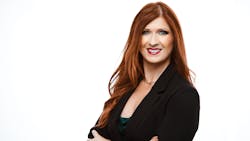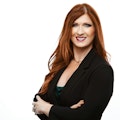Mobile dentistry and teledentistry: Are you in or out?
One of the most apparent and impressive attributes of dental professionals is the ability to adapt. We adapt when a patient walks in with a broken tooth, when a team member calls in sick, when a procedure takes longer than expected, and when faced with a pandemic and forced to close our doors for an extended period. Last year was like no other, and our ability to roll with changes was tested. I think it’s safe to say that every dental practice made some sort of permanent modification to their protocols, equipment, or how they operate. While we were faced with and continue to face many challenges, one thing is evident—we’ve had to make dental care more accessible.
For those of us with brick-and-mortar practices, making dental care more accessible may mean implementing teledentistry appointments. Early on in the pandemic, teledentistry made it possible for us to communicate with our patients when we couldn’t meet face-to-face, but it continues to be a viable communication tool. Teledentistry allows us to meet with our patients when it is mutually convenient. In addition, we’re able to reserve operatory time for more productive procedures and for patients who require in-person care. For many of us, teledentistry was introduced as a convenience during the pandemic, but it has proven to offer continued benefits to our practices.
There are many dental professionals who have decided to provide mobile dental services to improve access to quality dental care. Many practice models can be classified as mobile dentistry, from vans transformed into working operatories to mobile dental carts for house-call dentistry. This style of dentistry is not limited to emergency care or care for the poor. In fact, many mobile dental clinics offer a full array of general, cosmetic, and surgical dental care. This approach to dentistry isn’t for everyone, but it seems to bring an enormous amount of satisfaction to mobile dental health-care providers.
This month’s issue focuses on mobile dentistry and teledentistry. While these topics are often used interchangeably and both improve access to care, they are very different. Authors in this issue discuss mobile dentistry and teledentistry as separate entities, and some of the health-care providers who have implemented these practice models are highlighted. I’d particularly like to thank Sonya Dunbar, MHA, RDH, and Melissa Turner, BASDH, RDHEP, EFDA, for their contributions both to this important branch of dentistry and to this issue. They have dedicated their time, effort, and passion to improving access to dental health care for vulnerable populations and to educating and empowering dental professionals to consider this type of practice model. Sonya and Melissa have founded the National Mobile and Teledentistry Conference, taking place in March 2022. This event will further educate dental professionals on these topics and foster collaboration through enriching networking events. For more information, visit https://nmdconference.com/
As we close out the year, I’d like to thank you for the warm welcome to Dental Economics. I’m certainly grateful for the opportunity to share ideas and highlight the efforts of so many passionate dental professionals. I have a lot of great things in store for you next year, and I look forward to sharing all of it.
Wishing you a very happy holiday season and best wishes for a prosperous 2022.
About the Author
Pamela Maragliano, DMD
Chief Editor of Dental Economics
Pamela Maragliano, DMD, is the chief editor of Dental Economics. Based in Salem, Massachusetts, Dr. Maragliano began her clinical career as a dental hygienist. She went on to attend Tufts University School of Dental Medicine, where she earned her doctorate in dental medicine. She then attended the University of California, Los Angeles, School of Dental Medicine, where she became board-certified in prosthodontics. Dr. Maragliano owns a private practice, Salem Dental Arts, and lectures on a variety of clinical topics. You may contact her at [email protected].

